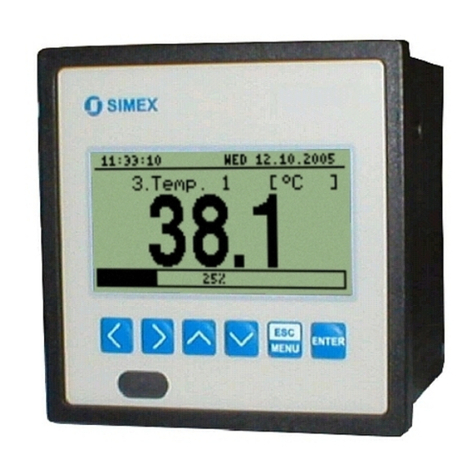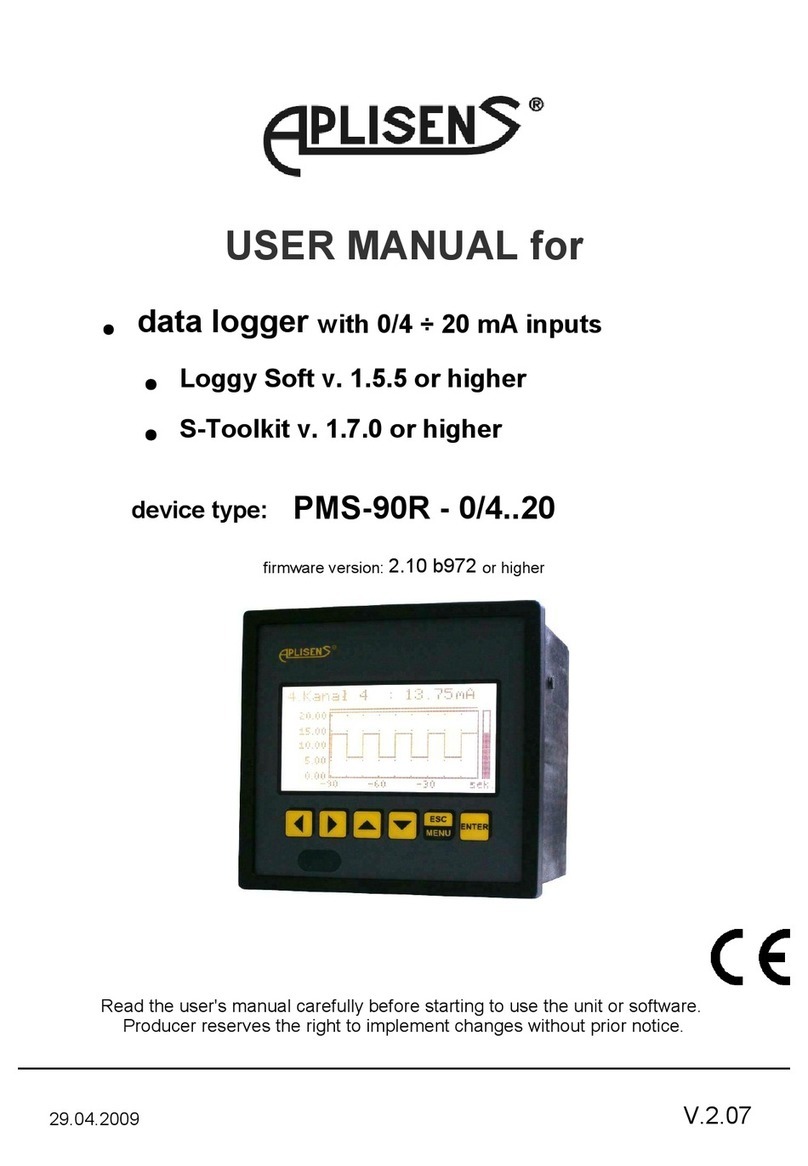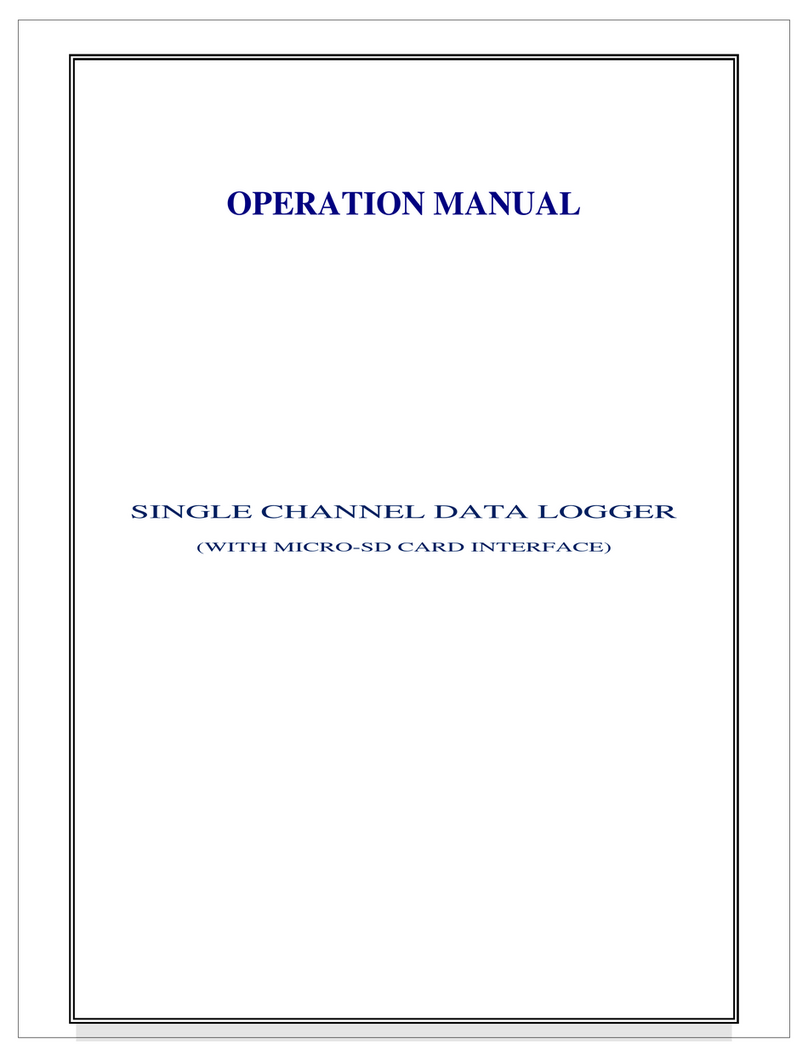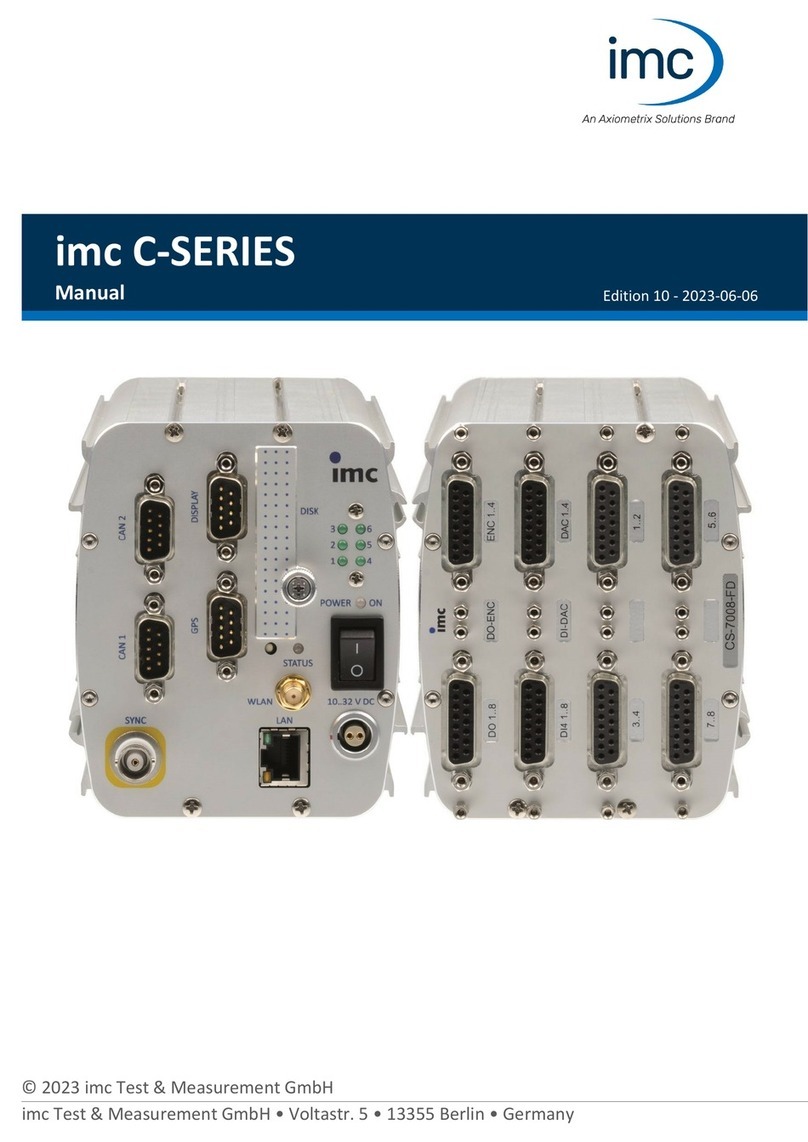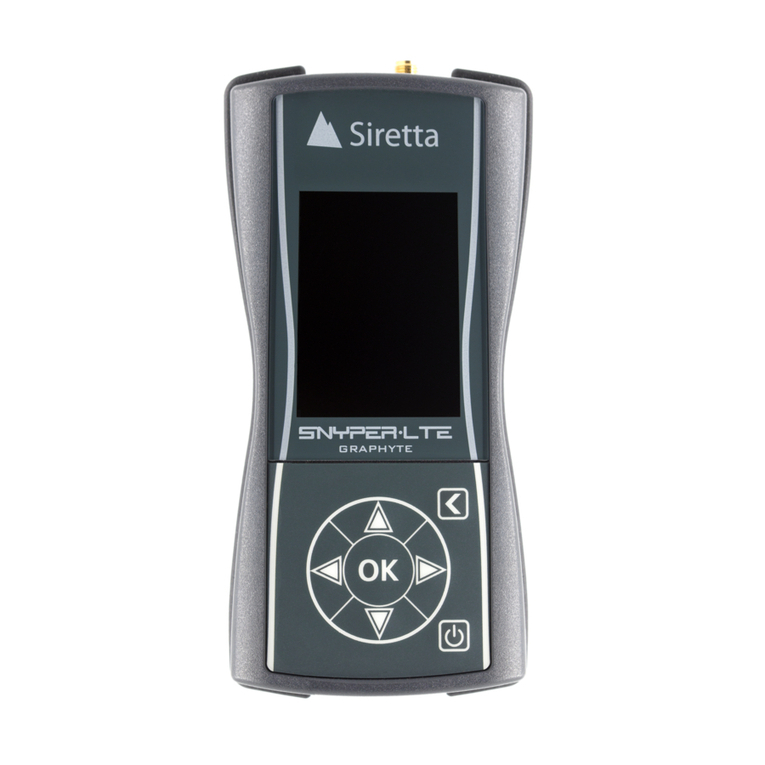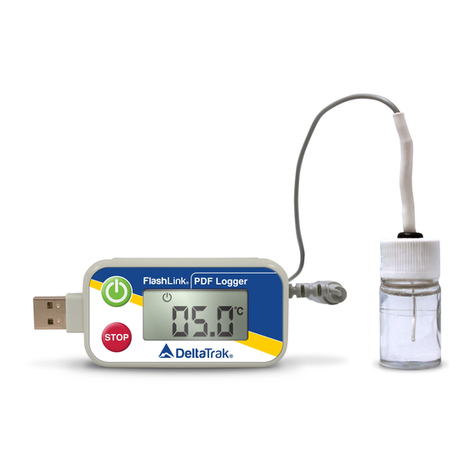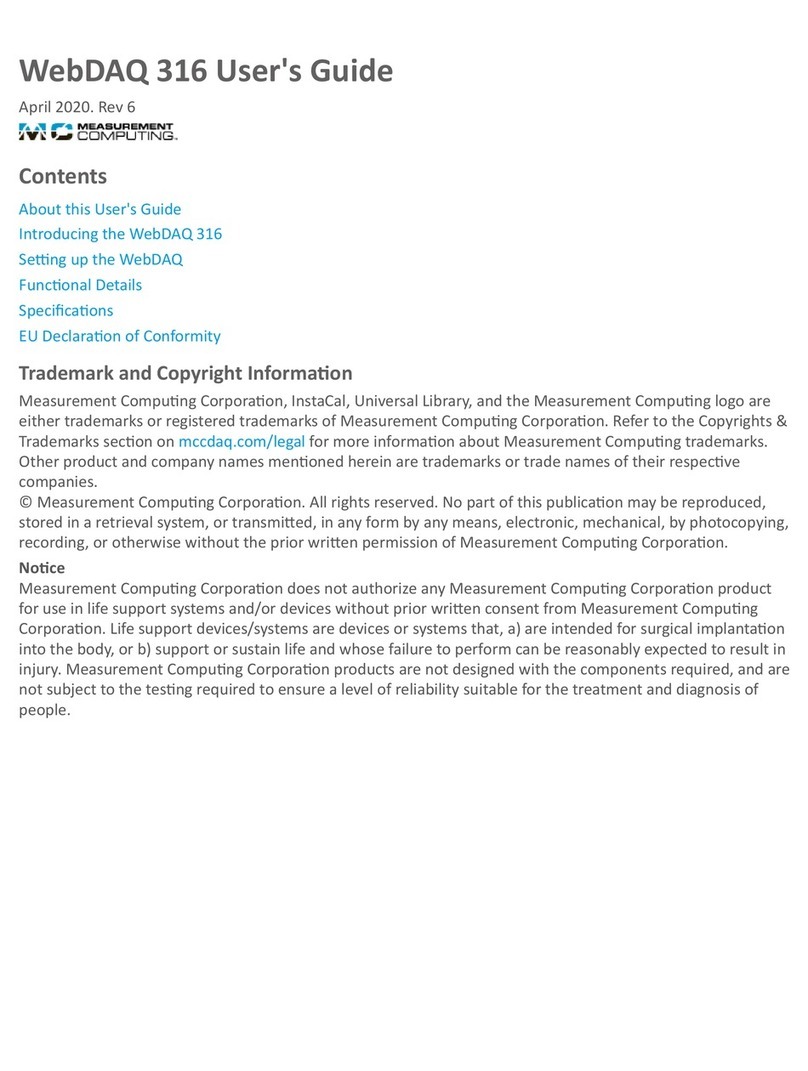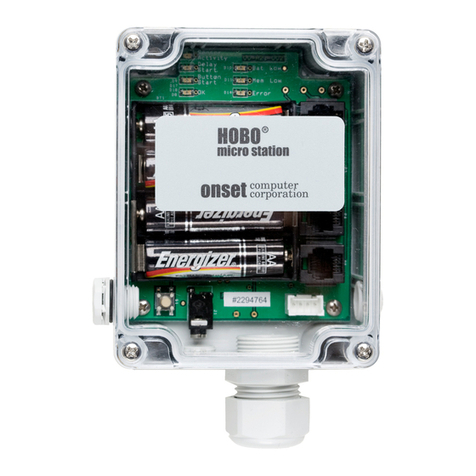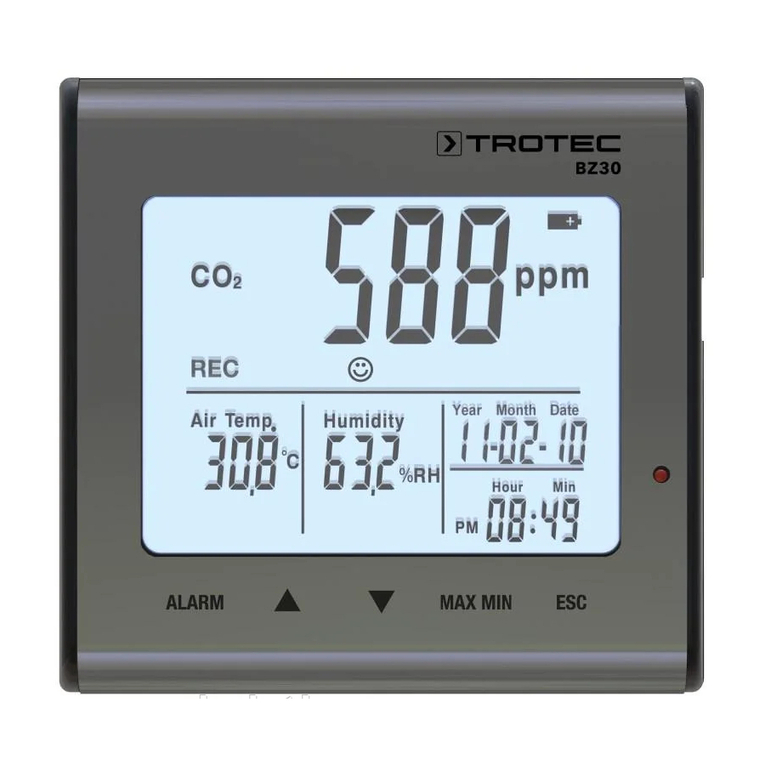Simex SRD-99X User manual

Assisting the automation
industry since 1986
User manual
DATA RECORDER
SRD-99
•Firmware: v.3.40 (b1) or higher
•Loggy Soft: v.1.10.0 or higher
•S-Toolkit: v.2.1.0 or higher
Read the user's manual carefully before starting to use the unit or software.
Producer reserves the right to implement changes without prior notice.
2019.0 .16 SRD-99X_INSSXEN_v.1.06.001

User manual - DATA RECORDER SRD-99X and cooperating software
CONTENTS
I. USER MANUAL FOR DATA RECORDER................................................................4
1. BASIC REQUIREMENTS AND USER SAFETY........................................................................................4
2. GENERAL CHARACTERISTICS................................................................................................................5
3. TECHNICAL DATA......................................................................................................................................7
4. DEVICE INSTALLATION..........................................................................................................................12
4.1. UNPACKING....................................................................................................................................12
4.2. ASSEMBLY......................................................................................................................................13
4.3. CONNECTION METHOD.................................................................................................................15
4.3.1.Connection of current type input ( U/I ver ion )...................................................................19
4.3.2.Connection of temperature type input ( mV/RTD /TC ver ion )..........................................21
4.4. MAINTENANCE................................................................................................................................22
5. FRONT PANEL DESCRIPTION................................................................................................................23
6. PRINCIPLE OF OPERATION...................................................................................................................24
6.1. MEASUREMENT MODE..................................................................................................................24
6.1.1.Mea urement range definition of current input ( U/I ver ion ).............................................24
6.1.2.Mea urement range definition of RTD and TC input ( mV/RTD/TC ver ion ).....................25
6.1.3.Recording momentary and averaged data...............................................................................26
6.2. MODES OF RESULT PRESENTATION..........................................................................................28
6.2.1. "Single channel" mode............................................................................................................29
6.2.2."Mea urement li t" mode.......................................................................................................30
6.2.3.”Graph” mode...........................................................................................................................32
6.2.4.”Channel Li t” mode...............................................................................................................35
6.3. PRINCIPLE OF OUTPUTS OPERATION........................................................................................37
6.3.1.Alarm ......................................................................................................................................37
6.3.2.Output control.........................................................................................................................38
6.3.3.Example of output control........................................................................................................40
7. DEVICE PROGRAMMING.........................................................................................................................41
7.1. PARAMETERS EDITION.................................................................................................................43
7.1.1.Numeric and witching parameter ("LIST" - type)..................................................................43
7.1.2. Text parameter ......................................................................................................................44
7.1.3.“SLIDER” - type parameter .....................................................................................................45
7.2. DESCRIPTION OF RESULTS PRESENTATION MODES MENU.................................................46
7.2.1."Mea urement li t option " menu...........................................................................................46
7.2.2.”Graph option ” menu..............................................................................................................47
7.2.3.”Channel li t option ” menu....................................................................................................47
7.3. RESULTS PRESENTATION MODES MENU STRUCTURE..........................................................48
7.4. MAIN MENU DESCRIPTION...........................................................................................................49
7.4.1.”Device information” menu.......................................................................................................49
7.4.2.”Di play option ” menu............................................................................................................49
7.4.3.”Logging etup” menu..............................................................................................................50
7.4.4.”Input etting ” menu (common parameter )...........................................................................53
7.4.5.”Input etting ” menu ( U/I ver ion )........................................................................................54
7.4.6.”Input etting ” menu ( mV/RTD/TC ver ion ).........................................................................56
7.4.7.”Output etting ” menu...........................................................................................................58
7.4.8.”Date & time etting ” menu....................................................................................................59
7.4.9.”RS485 port etting ” menu.....................................................................................................59
7.4.10.”Acce etup” menu.............................................................................................................61
7.4.11.”USB option ” menu...............................................................................................................61
7.4.12.”Language” menu...................................................................................................................62
7.4.13.”Default etting ” menu..........................................................................................................62
7.5. MAIN MENU STRUCTURE..............................................................................................................63
8. DO NLOADING DATA FROM DATA LOGGER.....................................................................................65
8.1. MODBUS (RS485) DATA DOWNLOAD..........................................................................................65
2

User manual - DATA RECORDER SRD-99X and cooperating software
8.2. USB PC DATA DOWNLOAD...........................................................................................................65
8.3. USB FLASH DRIVE (PENDRIVE) DATA DOWNLOAD..................................................................65
9. THE MODBUS PROTOCOL HANDLING.................................................................................................68
9.1. LIST OF REGISTERS......................................................................................................................68
9.2. TRANSMISSION ERRORS HANDLING..........................................................................................73
9.3. EXAMPLES OF QUERY/ANSWER FRAMES.................................................................................74
10. USER'S SETTINGS LIST........................................................................................................................77
II. USER MANUAL FOR “LOGGY SOFT”.................................................................84
1. GENERAL CHARACTERISTICS..............................................................................................................84
2. INSTALLATION AND STARTUP..............................................................................................................84
3. USING THE PROGRAM............................................................................................................................87
3.1. „CURRENT MEASUREMENT” MENU.............................................................................................88
3.2. „REPORTS” MENU..........................................................................................................................88
3.2.1.„Table” tab................................................................................................................................89
3.2.2.„Graph” tab...............................................................................................................................91
3.3. „CONFIGURATION” MENU.............................................................................................................96
3.3.1.„Device ” tab............................................................................................................................97
3.3.2.„Group ” tab - group operation .............................................................................................101
3.3.3.„Setting ” tab..........................................................................................................................103
3.4. LIST OF ERRORS AND FAULT DIAGNOSTICS .........................................................................105
III. USER MANUAL FOR “S-TOOLKIT”..................................................................106
1. GENERAL CHARACTERISTICS............................................................................................................106
2. INSTALLATION AND STARTUP............................................................................................................106
3. USING PROGRAM..................................................................................................................................107
3.1. “INPUTS SETTINGS” TAB.............................................................................................................108
3.2. “OUTPUTS SETTINGS” TAB.........................................................................................................109
3.3. “LOGGING SETUP” TAB...............................................................................................................109
3.4. “INTERFACE OPTIONS” TAB......................................................................................................110
3.5. “DEVICE INFORMATION” TAB.....................................................................................................112
3.6. CONFIGURATION MODES...........................................................................................................113
3.6.1.Individual configuration of channel .......................................................................................113
3.6.2.Configuring elected channel ...............................................................................................113
3.6.3.Configuring all channel .........................................................................................................113
3.7. UPDATING DEVICE FIRMWARE..................................................................................................114

User manual - DATA RECORDER SRD-99X and cooperating software
Explanation of symbols used in the manual:
- Thi ymbol denote e pecially important guideline concerning the in tallation and
operation of the device. Not complying with the guideline denoted by thi ymbol
may cau e an accident, damage or equipment de truction.
IF THE DEVICE IS NOT USED ACCORDING TO THE MANUAL THE USER IS
RESPONSIBLE FOR POSSIBLE DAMAGES.
- Thi ymbol denote e pecially important characteri tic of the unit.
Read any information regarding thi ymbol carefully
I. USER MANUAL FOR DATA RECORDER
1. BASIC REQUIREMENTS AND USER SAFETY
- The ma ufacturer is ot respo sible for a y damages caused by
i appropriate i stallatio , ot mai tai i g the proper e viro me tal
co ditio s a d usi g the u it co trary to its assig me t.
- Installation should be conducted by qualified personnel . During installation all
available safety requirements should be considered. The fitter is responsible for
executing the installation according to this manual, local safety and EMC
regulations.
- The unit must be properly set-up, according to the application. Incorrect
configuration can cause defective operation, which can lead to unit damage or
an accident.
- If the device is equipped with PE conntector, it should be connected to PE wire.
- If i the case of a u it malfu ctio there is a risk of a serious threat to the
safety of people or property additio al, i depe de t systems a d
solutio s to preve t such a threat must be used.
- The u it uses da gerous voltage that ca cause a lethal accide t. The u it
must be switched off a d disco ected from the power supply prior to
starti g i stallatio of troubleshooti g (i the case of malfu ctio ).
- Neighbouring and connected equipment must meet the appropriate standards
and regulations concerning safety and be equipped with adequate overvoltage
and interference filters.
- Do ot attempt to disassemble, repair or modify the u it yourself. The u it
has o user serviceable parts. Defective u its must be disco ected a d
submitted for repairs at a authorized service ce tre.
4
i
!
!

User manual - DATA RECORDER SRD-99X and cooperating software
2. GENERAL CHARACTERISTICS
• Multifunctional
Device is designed for recording, displaying current or averaged values and
presentation of technological parameter trends in graphic form.
• Large data storage capacity
The registered measurement results are recorded in the unit's memory. The
capacity of installed memory allows to store over 3 000 000 measurements (8 MB).
• Configurable measurement and control input
The unit has up to 8 channels (depending on version) of measurement signals and
one digital voltage input with programmable functions, e.g. control of the recording
process. Each signal can be freely configured and described. Depending on device
version all measured parameters must be available as current signals (0-20 mA or
-20 mA standards for U/I versio ), voltage signals (0-5 V, 1-5 V, 0-10 V. 2-10 V
standards for U/I versio ), K, S, J, T, N, R, B, E standards for mV/RTD/TC versio
and 60 mV, 75 mV, 100 mV, 150 mV standards for mV/RTD/TC versio ) or
resistance (Pt100, Pt500 or Pt1000 standards for mV/RTD/TC versio ). The
internal analogue-digital converter has a 12 or 16 bit resolution (depending on input
type), which provides high measurement resolution results. Additionally, individual
alphanumeric description (text) of each of the recorded channels is possible.
• Fast serial interface
The data logger is fitted with a galvanic isolation RS- 85 interface, programmed
with ModBus RTU transmission protocol. This enables the connection of a number
of data recorders into the network, remote collecting of data from each unit and also
remote configuration. The application of the RS- 85 interface instead of RS-232 is
due to the possibility of achieving high transmission speeds using transmission lines
of larger length than is possible with the RS-232 interface.
• Built-in USB Host interface (optional)
Optionally the device can be equipped with built-in USB Host interface, allowing for
data transfer to popular USB Flash Drives (PenDrives). This method allows for
significant simplification of unit application: it is no longer necessary to connect PC
and data logger via RS- 85 interface.
Significant acceleration of data transfer is an additional advantage: data download
can be 10 times faster than using RS- 85 interface.
WARNING! Device should work properly with any standard Flash Drives, but
manufacturer can not guarantee proper cooperation with non-standard devices, or
with devices developed after data logger release.
5

User manual - DATA RECORDER SRD-99X and cooperating software
• ide range of power supply voltage and external sensor power supply
The built-in pulse power supply allows to power the device with 85...230...260 V
AC/DC, 16...24...35 V AC, 19...24...50 V DC, 11...12...16 V DC, 10...12...13 V AC
(depending on version). Data recorder (version with current inputs only) is equipped
with output for powering the sensor and converters with 2 V DC ±5% and
max.current 50 mA for 11...12...16 V DC, 10...12...13 V AC power supply voltage
and max. 200 mA for other power supply voltage.
• Legible graphic display
The 128 x 6 points display with a backlight mounted on front of the unit is a big
advantage of the data recorder available in two colours. It allows the display of trend
graphs for each channel separately. Different operation modes provide the
possibility of selecting and adjusting the method of data presentation depending on
the user's requirements. Data recording intervals are selected by the user from the
menu level. Additionally, it is possible to set the display to show one current value
measured for a selected channel.
• Easy configuration
There are 6 keys on the front of the data recorder that enable the configuration of
the unit. The menu assisted with full text descriptions makes the unit configuration
process quite easy. However, due to a significant number of configured parameters
it is advised to use the attached configuration software for PCs.
6

User manual - DATA RECORDER SRD-99X and cooperating software
3. TECHNICAL DATA
Power supply voltage
(depending on version)
External fuse (required)
Power consumption
85...230...260 V AC/DC; 50 ÷ 60 Hz (separated),
19...24...50 V DC, 16 V...24...35 V AC (separated)
or 11...12...16 V DC, 10...12...13 V AC (separated)
T - type, max. 2 A
for power supply voltage: 12 V DC max. 12 W,
for other power supply voltage:
typically 7 VA; max. 12 VA
Measurement inputs
(depending on version)
U/I version:
mV/RTD/TC version:
up to 8 inputs 0÷5 V, 1÷5 V, 0÷10 V, 2÷10 V, 0÷20 mA
or ÷20 mA, common ground
up to 8 inputs Pt100, Pt500, Pt1000 (with manual
connection switch 2 or 3-wire), K, S, J, T, N, R, B, E,
0÷60 mV, 0÷75 mV, 0÷100 mV or 0÷150 mV
Digital input 1 input 2 V DC, galvanic isolation
power consumption: 7,5 mA / 2 V,
isolation: 1 min @ 500 V DC.
Digital outputs 2 electronic relays, NO type, 2 V AC / 35 V DC /
max. 200 mA, overload protection
Recording cycle 1 sec./ 2 sec. / 5 sec. / 10 sec. / 15 sec. / 20 sec. /
30 sec. /1 min. / 2 min. / 5 min. / 10 min. / 15 min. /
20 min. / 30 min. / 60 min.
Communication interface RS- 85, 8N1 / Modbus RTU, galvanic isolated
1 min @ 500 V DC,1200 bit/s ÷ 115200 bit/s,
USB PC,
USB Host (in front or in the back of the device) support
for standard USB FlashDrive devices
Display
Backlight color
LCD graphic display, 128 x 6 points, with backlight
white or amber
Data memory 8 MB - version with USB Host interface
Protection level
version without USB interface IP 65 (front panel, optional version with mounting hole
sealing available)
IP 20 (housing and terminals)
version with USB interface IP 5 (front panel, after using waterproof cover)
IP 20 (housing and terminals)
7

User manual - DATA RECORDER SRD-99X and cooperating software
Housing type
Housing material
Housing dimensions
Mounting hole
Assembly depth
Panel thickness
panel mounting
NORYL - GFN2S E1
96 x 96 x 100 mm
90,5 x 90,5 mm
102 mm
max. 5 mm
Operating temperature
(depending on version)
Storage temperature
(depending on version)
Humidity
Altitude
0 °C to +50 °C (standard)
-20 °C to +50 °C (option)
-10 °C to +70 °C (standard)
-20 °C to +70 °C (option)
5 to 90% no condensation
up to 2000 meters above sea level
Screws tightening max. torque 0,5 Nm
Max. connection leads diameter 2,5 mm2
Safety requirements according to: PN-EN 61010-1
installation category: II
pollution degree: 2
voltage in relation to ground: 300 V AC
insulation resistance: >20 MW
insulation strength between power supply and
input/output terminal: 1 min. @ 2300 V (see Fig. 3.1)
EMC PN-EN 61326-1
Device described in this manual is available in two versions differed by
measurement inputs type. This manual contain following short descriptions:
U/I version - means device with type of inputs: voltage ( 0÷5 V, 1÷5 V, 0÷10 V,
2÷10 V)
current (0÷20 mA, ÷20 mA)
mV/RTD/TC version - means device with type of inputs: TC (K, S, J, T, N, R, B, E)
RTD (Pt100 / Pt500 / Pt1000)
mV (0÷60 mV, 0÷75 mV,
0÷100 mV lub 0÷150 mV)
Parameters of current type inputs ( U/I version )
I put type 0÷5 V, 1÷5 V, 0÷10 V, 2÷10 V, 0÷20 mA or ÷20
mA, common ground
Measurement range ± 9999 plus decimal point
Current measurement accuracy ± 0.1% @ 25 °C; ± one digit (for 0÷10 and 0÷20 mA
range)
Temperature stability 50 ppm / °C
Sampling rate 8 sps
Accepted prolonged input overload 20%
Voltage input resistance 60 kW
Current input resistance 100 W
8
i

User manual - DATA RECORDER SRD-99X and cooperating software
Sensor power supply output 2 V DC ± 5% and max. current:
50 mA for power supply voltage 11...12...16 V DC,
10...12...13 V AC,
200 mA for other power supply voltage,
Uninsulated from measurement inputs
Current input protection 50 mA auto-reset fuse
9

User manual - DATA RECORDER SRD-99X and cooperating software
Parameters of TC, RTD and mV type inputs ( mV/RTD/TC version )
Thermocouple i put K, S, J, T, N, R, B, E
Measurement ranges K:
S:
J:
T:
N:
R:
B:
E:
-200 °C
-328 °F
-50 °C
-58 °F
-210 °C
-3 6 °F
-200 °C
-328 °F
-200 °C
-328 °F
-50 °C
-58 °F
250 °C
82 °F
-200 °C
-328 °F
÷
÷
÷
÷
÷
÷
÷
÷
÷
÷
÷
÷
÷
÷
÷
÷
1370 °C
2 98 °F
1768 °C
321 °F
1200 °C
2192 °F
00 °C
752 °F
1300 °C
2372 °F
1768 °C
321 °F
1820 °C
3308 °F
1000 °C
1832 °F
Measurement accuracy K, J, E: ± 0.1% @ 25 °C; ± one digit
N: ± 0.2% @ 25 °C; ± one digit
S, T, R, B: ± 0.5% @ 25 °C; ± one digit
Accuracy of cold ends temperature
compensation ± 1 °C
RTD i put Pt100, Pt500 or Pt1000 (with manual connection
switch 2 or 3-wire)
Measurement range -100 °C ÷ +600 °C
-1 8 °F ÷ +1112 °F
Measurement accuracy ± 0.1% @ 25 °C; ± one digit
Measurement wires resistance max. 20 W (every wire)
Voltage i put (150 mV) 0÷60 mV, 0÷75 mV, 0÷100 mV, 0÷150 mV
Measurement accuracy ± 0.1% @ 25 °C; ± one digit (for 0÷150 mV range)
Input resistance > 1,5 MW
Accepted prolonged input overload 20,00%
Temperature stability 50 ppm / °C
Display range -999 ÷ 9999 (for RTD mode – see above)
Common ground
10

User manual - DATA RECORDER SRD-99X and cooperating software
Sampling rate depends on available number of inputs in the device and selected type
of input:
RTD TC mV
1 channel c.a. 500 ms c.a. 250 ms c.a. 250 ms
2 channels c.a. 1 s c.a. 00 ms c.a. 00 ms
channels c.a. 1, s c.a. 600 ms c.a. 600 ms
8 channels c.a. 2,6 s c.a. 1 s c.a. 1 s
Tab. 3.1. Sampling rate in relation to number and elected type of input
•Cables connected to RTD inputs can not be longer than 30 meters and
must be laid completely in building.
•When 2-wire connection method is used, the wires should be as short
as possible.
•When 3-wire connection method is used, the wires should be even.
Software (Window environment)
•S-Toolkit, PC software for data logger easy configuring,
•Loggy Soft, PC software for moving, reporting, archiving and displaying recorded data.
This is a class A u it. I a reside tial or a similar area it ca cause radio
freque cy i terfere ce. I such cases the user ca be requested to use
appropriate preve tive measures.
Carefully check that the isolation used with the unit (Fig. 3.1) meets the
expectations and if necessary use appropriate measures of overvoltage protection.
Additionally, insure the appropriate air and surface insulation gaps when installing
(Tab. 3.2).
Range of operating voltage Air gap [mm] Surface gap [mm]
Up to 50V RMS or DC 0,2 1,2
Up to 100V RMS or DC 0,2 1,
Up to 150V RMS or DC 0,5 1,6
Up to 300V RMS or DC 1,5 3,0
Tab. 3.2. Minimal in ulation gap according to EN 61010-1
11
!
!
!

User manual - DATA RECORDER SRD-99X and cooperating software
Fig. 3.1. Schematic diagram howing the in ulation between individual circuit of the unit.
4. DEVICE INSTALLATION
The unit has been designed and manufactured in a way assuring a high level of user
safety and resistance to interference occurring in a typical industrial environment. In order to
take full advantage of these characteristics installation of the unit must be conducted correctly
and according to the local regulations.
- Read the basic safety requirements on page 4 prior to starting the installation.
- Ensure that the power supply network voltage corresponds to the nominal
voltage stated on the unit’s identification label.
- The load must correspond to the requirements listed in the technical data.
- All installation works must be conducted with a disconnected power supply.
- Protecting the power supply connections against unauthorized persons must be
taken into consideration.
4.1. UNPACKING
After removing the unit from the protective packaging, check for transportation damage.
Any transportation damage must be immediately reported to the carrier. Also, write down the
unit serial number located on the housing and report the damage to the manufacturer.
12
!
I ter al circuits
relay 2
relay 1
Exter al se sor
supply output
Measureme t i puts RS 485
i terface
Reinforced insulation 1min @ 2300V AC
Supplementary insulation 1min @ 1350V AC
Basic insulation 1min @ 500V AC
No insulation
Relay circuits
Power
supply

User manual - DATA RECORDER SRD-99X and cooperating software
4.2. ASSEMBLY
- The unit is designed for mounting inside housings (control panel, switchboard)
inssuring appropriate protection against surges and interference. Metal housings
must be connected to ground in a way that complies with the governing
regulations.
- Disconnect the power supply prior to starting assembly.
- Check the connections are wired correctly prior to switching the unit on.
In order to install the unit, a 90,5 x 90,5 mm mounting hole (Fig. 4.1) must be
prepared. The thickness of the material of which the panel is made must not exceed
5mm. When preparing the mounting hole take the grooves for catches located on
both sides of the housing into consideration (Fig. 4.1). Place the unit in the
mounting hole inserting it from the front side of the panel, and then fix it using the
brackets (Fig. 4.3). The minimum distances between the center points of multiple
units - due to the thermal and mechanical conditions of operation - are 115 mm x
115 mm (Fig. 4.5).
Fig. 4.1. Recommended mounting hole dimen ion
1
90,5 mm
13 mm
8 mm
8 mm
13 mm
1 mm max. 5 mm
90,5 mm
1 mm
!

User manual - DATA RECORDER SRD-99X and cooperating software
Fig. 4.2. Allowable mounting hole dimen ion
Fig. 4.3. In talling of bracket , and dimen ion of connector .
14
92 mm
max. 5 mm
90,5 mm
92 mm
8 mm
12 mm 10 mm
8,5 mm
16 mm
removable terminals
NOTE:
U/I version - removable terminals
mV/RTD/TC version - immovable terminals

User manual - DATA RECORDER SRD-99X and cooperating software
Fig. 4.4. Connector removing method
Fig. 4.5. Minimum di tance when a embly of a number of unit
4.3. CONNECTION METHOD
Caution
- Installation should be conducted by qualified personnel. During installation all
available safety requirements should be considered. The fitter is responsible for
executing the installation according to this manual, local safety and EMC
regulations.
15
!
115 mm
115 mm
back ide
of device
connector
GOOD
back ide
of device
connector
WRONG

User manual - DATA RECORDER SRD-99X and cooperating software
- The unit is not equipped with an internal fuse or power supply circuit breaker.
Because of this an external time-delay cut-out fuse with a small nominal current
value must be used (recommended bipolar, max. 2A) and a power supply circuit-
breaker located near the unit. In the case of using a monopolar fuse it must be
mounted on the phase cable (L).
- The power supply network cable diameter must be selected in such a way that in
the case of a short circuit of the cable from the side of the unit the cable shall be
protected against destruction with an electrical installation fuse.
- Wiring must meet appropriate standards and local regulations and laws.
- In order to secure against accidental short circuit the connection cables must be
terminated with appropriate insulated cable tips.
- Tighten the clamping screws. The recommended tightening torque is 0.5 Nm.
Loose screws can cause fire or defective operation. Over tightening can lead to
damaging the connections inside the units and breaking the thread.
- The separable clamps should be inserted into appropriate connectors in the unit,
even if they are not used for any connections.
- U used termi als (marked as .c.) must ot be used for co ecti g a y
co ecti g cables (e.g. as bridges), because this ca cause damage to the
equipme t or electric shock.
- If the unit is equipped with housing, covers and sealing to, protecting against
water intrusion, pay special attention to their correct tightening or clamping. In the
case of any doubt consider using additional preventive measures (covers, roofing,
seals, etc.). Carelessly executed assembly can increase the risk of electric shock.
- After the installation is completed do not touch the unit’s connections when it is
switched on, because it carries the risk of electrical shock.
Due to possible sig ifica t i terfere ce i i dustrial i stallatio s appropriate measures
assuri g correct operatio of the u it must be applied. To avoid the u it of improper
i dicatio s keep recomme datio s listed below.
-Avoid running signal cables and transmission cables together with power supply cables
and cables controlling inductive loads (e.g. contactors). Such cables should cross at a
right angle.
-Contactor coils and inductive loads should be equipped with interference protection
systems, e.g. RC-type.
-Use of screened signal cables is recommended. Signal cable screens should be
connected to the earthing only at one of the ends of the screened cable.
-In the case of magnetically induced interference the use of twisted pair of signal cables is
recommended. Twisted pair (best if shielded) must be used with RS- 85 serial
transmission connections.
-In the case of interference from the power supply side the use of appropriate interference
filters is recommended. Bear in mind that the connection between the filter and the unit
should be as short as possible and the metal housing of the filter must be connected to
the earth with the largest possible surface. The cables connected to the filter output must
not be run with cables with interference (e.g. circuits controlling relays or contactors).
16
!

User manual - DATA RECORDER SRD-99X and cooperating software
Connections of power supply voltage and measurement signals are executed using the
screw connections on the back of the unit’s housing.
Fig. 4.6. Method of cable in ulation replacing and cable terminal dimen ion
All co ectio s must be made while power supply is disco ected !
Depending on ver ion:
85...230...260 V AC/DC,
19...24...50 V DC, 16...24...35 V AC
11...12...16 V DC, 10...12...13 V AC
Fig. 4.7. Connection of power upply
Fig. 4.8. Connection of RS-485 tran mi ion ignal
17
!
6-7 mm
max. 2 mm
N
FUSE
L
1
2
Power supply
(depe di g o versio )
RS-232/ 85
Interface
RS-485
data+
data-
GND
.c.
di +
di -
12
11
10
9
8
7

User manual - DATA RECORDER SRD-99X and cooperating software
Fig. 4.9. Connection of USB tran mi ion ignal
Fig. 4.10. Connection of digital input (depending on data recorder configuration)
18
24 V DC external
supply
DIN-
recording enable
external switch
DIN+
RS-485
data+
data-
GND
.c.
di +
di -
12
11
10
9
8
7
USB
Interface
USB PC

User manual - DATA RECORDER SRD-99X and cooperating software
4.3.1.
Connections of current type inputs (
U/I version )
Fig. 4.11. Terminal de cription ( U/I version )
19
ER1
(optio al)
ER2
(optio al)
PE
GND
U1
GND
+2 V
U2
U3
U
U5
U6
U7
U8
+2 V
additio al termi als (i ter ally co ected)
USB PC
Host USB (optional)
RS-485
data+
data-
GND
.c.
di +
di -
48
47
46
45
44
43
42
41
40
39
38
37
36
35
34
33
32
31
30
29
28
27
26
25
24
23
22
21
20
19
18
17
16
15
14
13
GND
GND
+2 V
+2 V
I1
I2
I3
I
I5
I6
I7
I8
12
11
10
9
8
7
6
5
4
3
1
2
Power supply
(depe di g o versio )

User manual - DATA RECORDER SRD-99X and cooperating software
Fig. 4.12. Connection of current ignal of active en or
(current ignal 0-20 mA or 4-20 mA and ground)
Fig. 4.13. Connection of current ignal of 2-wire en or
( en or power upply voltage and 4-20 mA ignal)
20
36
35
34
33
32
31
30
29
28
27
26
25
I p. 1
4-20 mA
exter al
GND
co ectio
. . . . .
I p. 8
0-10 V
24
23
22
21
20
19
18
17
16
15
14
13
additio al termi als (i ter ally co ected)
exter al
se sor
supply
co ectio
. . . . .
exter al
GND
co ectio
36
35
34
33
32
31
30
29
28
27
26
25
24
23
22
21
20
19
18
17
16
15
14
13
additio al termi als (i ter ally co ected)
to se sor
to se sor
Table of contents
Other Simex Data Logger manuals
Popular Data Logger manuals by other brands

TRAMPA
TRAMPA VESC EXPRESS manual
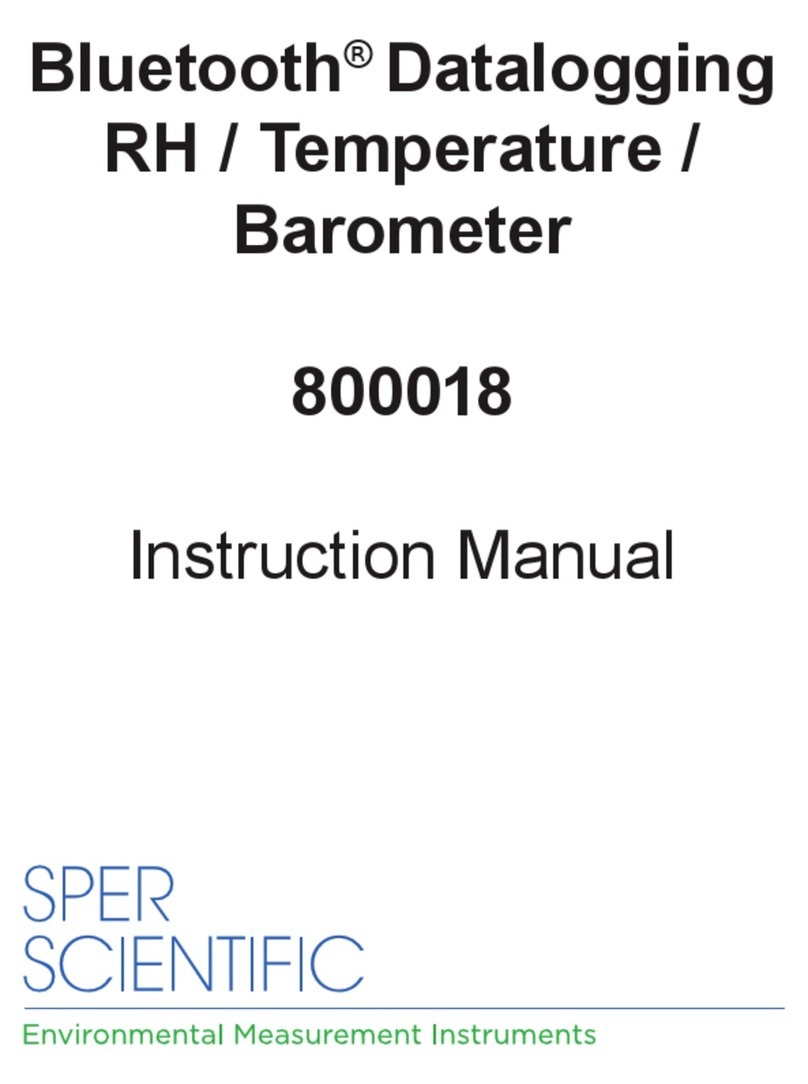
Sper scientific
Sper scientific 800018 instruction manual
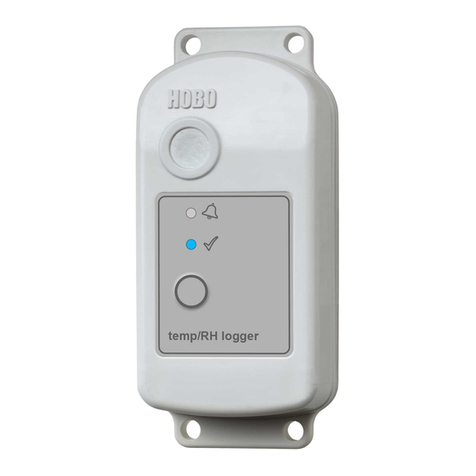
Hobo
Hobo MX2300 Series manual
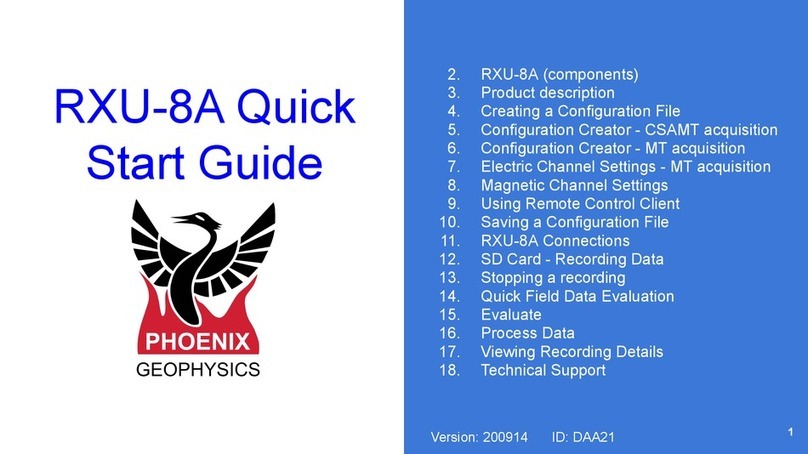
Phoenix Geophysics
Phoenix Geophysics RXU-8A quick start guide
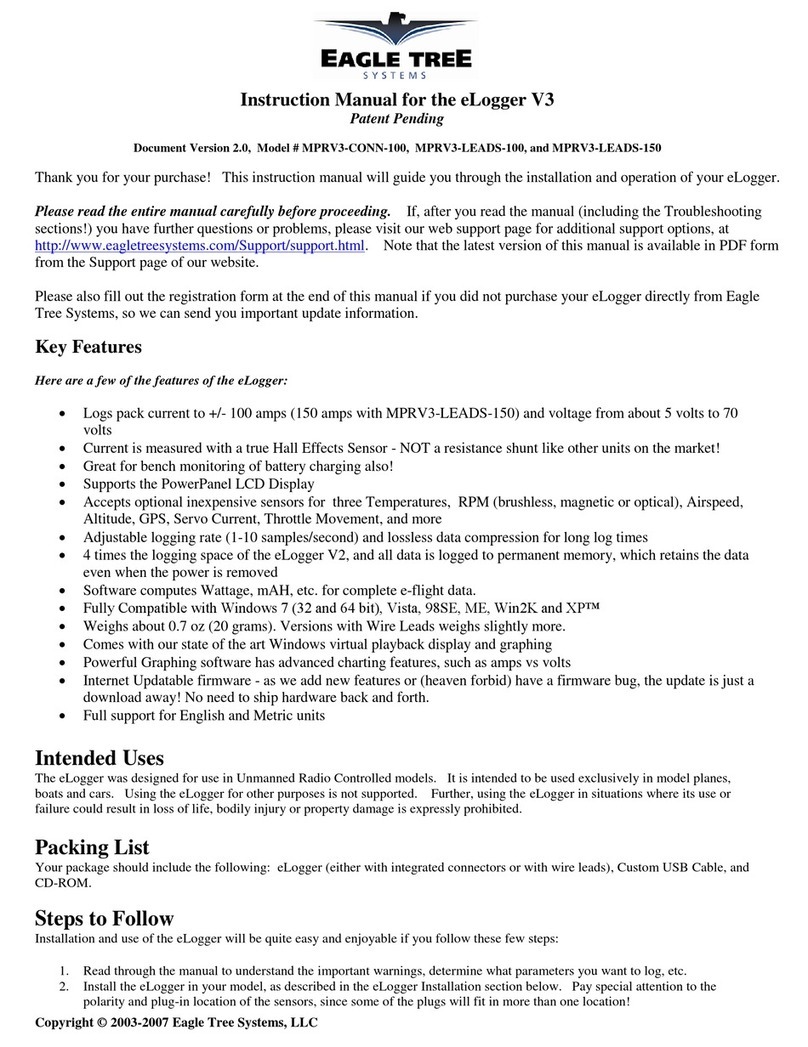
Eagle Tree Systems
Eagle Tree Systems eLogger V3 instruction manual
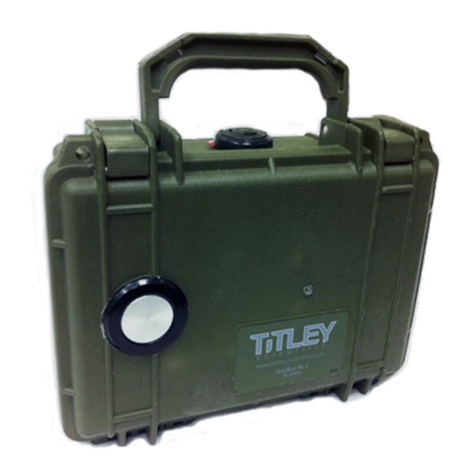
TiTLEY Scientific
TiTLEY Scientific AnaBat Roost Logger quick start guide
